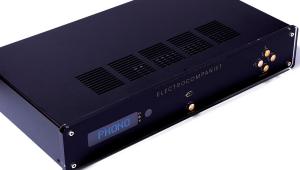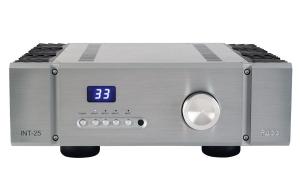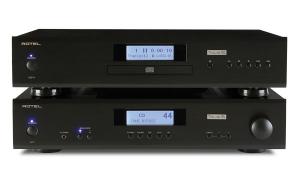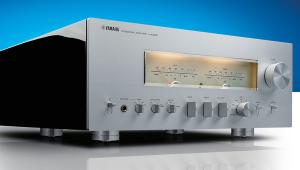Hegel H95
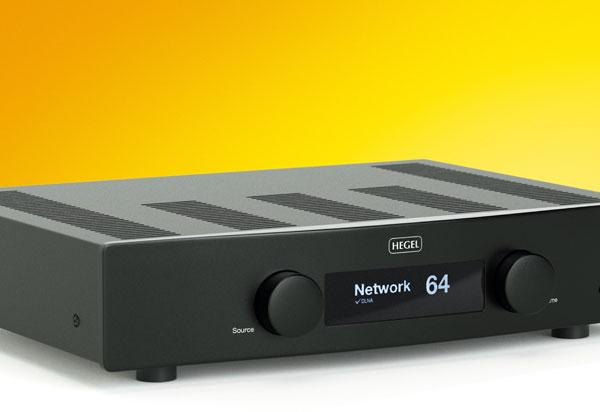
 Before we get started, let’s lay a commonly held misnomer to rest. Norwegian maverick manufacturer Hegel is named not after the German philosopher who along with Kant shaped Western philosophy as we know it today, but instead a metal band that company founder Bent Holter played in during the Nineties.
Before we get started, let’s lay a commonly held misnomer to rest. Norwegian maverick manufacturer Hegel is named not after the German philosopher who along with Kant shaped Western philosophy as we know it today, but instead a metal band that company founder Bent Holter played in during the Nineties.
At the time Holter was a student at the Technical University in Trondheim working on a thesis to solve the issue of distortion. Eschewing traditional schematics, he developed a project that became the basis for the SoundEngine technology that the company still employs to this day. And the band? Not only did they benefit from Holter’s deft musicianship, but he also built them amplifiers to use for gigs. Though The Hegel Band may have slipped into obscurity in the years since, its namesake has gone on to become one of the country’s finest exports.
When we reviewed it back in HFC 449, Hegel’s flagship H590 cantered to an Editor’s Choice badge without breaking into a sweat, thanks to its irresistible combination of power and total connectivity, but it’s at the other end of the scale that the market becomes far more competitive and though its entry-level H90 was among the front runners in our integrated Group Test back in HFC 427, it faced stiff competition. All of which means that the replacement H95 that marks the entry-point to Hegel’s integrated amplifier range has some pretty big boots to fill. Pressure? Not half...
Since Hegel introduced the H90 three years ago, it has followed up with the H120 (HFC 460), H190, H390 and the aforementioned range-topping H590. While three years is a relatively short amount of time when it comes to development of amplifiers, features – namely those relating to streaming – have moved on somewhat. And so it became self-evident that some functionality could be trickled down to the entry-level model. Consequently the inclusion of Spotify Connect and an update for AirPlay2 that the H120 and H190 enjoyed have been carried over to the H95. Of course, there have to be some omissions in order to hit a lower price point and so consequently the ability to be a Roon endpoint along with some custom installation facilities (most notably IP and Control4 remote operation) have fallen by the wayside. Similarly, the reassuringly chunky, metal RC10 remote control handset that came as standard with the H120 and models above is no longer bundled and will set you back an additional £95 should you wish to adjust the volume level from the comfort of your armchair.
The tinkering continues under the hood with the most notable improvement being the inclusion of the same DAC chipset featured in the H120 and H190. This utilises so-called ‘SyncroDAC’ technology – employing balanced signal processing throughout – to maintain dynamic range and reduce distortion in the process.
Specified at a claimed 60W into 8ohm loads – as opposed to the 75W of the H120 – additional adjustments have been made to the analogue section of the amp, with improvements made to both the power supplies and the headphone output in an effort to reduce noise. Network connectivity comes via the Ethernet input and there is an asynchronous USB-B port alongside three optical digital and a single coaxial (RCA) input. Though the balanced analogue inputs that are on offer further up the range have been eschewed, there is a brace of RCA line inputs alongside a pair for its variable preamp out – so the H95 can be hooked up to an external power amplifier for bi-amping suitably equipped speakers or for a future system upgrade.
Inputs can be configured as a bypass – fixed-level ins for use with an external surround processor – and you can also set maximum volume levels for the amp’s main output or the headphones. Should you go down the route of investing in the optional remote control handset, you can additionally use this to specify the start-up volume.
Finally, there’s a rather handy ‘wake on LAN’ setting that allows you to use Spotify or AirPlay from a portable device so that – even if the H95 is turned off – the amp jumps into action out of standby and starts playing. It’s hardly a deal breaker, but is nonetheless useful should you decide to switch from playing music on your phone or tablet and cast it onto your hi-fi.
It would be remiss of us to neglect to mention that, like all of its amps, Hegel doesn’t offer a dedicated app for plug and play. Instead it recommends that you employ Conversdigital’s Mconnect Player app. The free lite version is more than up to the task – though like all UPnP apps when streaming, it’s limited to 24-bit/96kHz – but it’s worth paying out the $5.99 for the full version to ditch the ads and enjoy full Qobuz and Tidal access – subject, of course, to you subscribing to them. Alternatively, you can employ a different app and in our tests Bubble UPnP, Linn’s Kinsky and PlugPlayer all perform admirably.
Sound quality
Any fears that the entry-level status of the H95 and the efforts made to hit a lower price point might have had a negative impact on the ‘Hegelness’ of this integrated’s performance are swiftly allayed once it swings into action. Paired up with Neat’s floorstanding Iota Xplorer (HFC 435)the stripped-down instrumentation of The Steve Howe Trio’s Fair Weather Friend, taken from last year’s New Frontier, offers up a powerhouse performance. The former Yes guitarist takes centre stage with a pleasing snap, while son Dylan’s drums carry persuasive weight and drive and Ross Stanley’s joyful Hammond organ skips between the two on the broad, high soundstage. The H95 instantly establishes itself as being firmly in control, detailed and highly refined, while demonstrating a delicious sense of exuberance as it launches enthusiastically into the music.
Moving on from the jazz stylings of the trio, the period instruments of the Simphonie Du Marais take on Handel’s Water Music & Royal Fireworks presents an entirely different challenge – one that the H95 bats away with apparent ease. Directed by ensemble founder Hugo Reyne, the integrated manages to show a deft touch, nimbly negotiating the dance tunes that are woven into the piece while bringing out the distinctive character of the contrabasses and hautbois within a rich reverberant church acoustic that gives the music the space it requires to expand and breathe. Throughout the Hegel manages to sound large and stately and things are ramped up even further in the frenetic final section of Fireworks while maintaining the presence of the instruments in among the vast cacophony of the drums.
A change of pace to the comparatively bleak Americana of Jason Isbell & The 400 Unit’s Reunions album does little to take the sheen off of an already deeply impressive performance. The H95 dives deep into the harmonies while ensuring that Isbell’s vocals remain clear and forceful in the mix. Meanwhile, it’s ready to deliver a mighty slam when the band kicks it up a gear, getting deep into the music as and when required.
It’d ordinarily be at this point that we’d start the “there is a downside of course...” section of the review, but the fact is that whatever we throw at it, the H95 comes up smelling of roses. Whether it’s called upon to display an effortless lightness and fleet of foot or hefty scale and power, the results are consistently impressive and it never appears wanting. Whether it’s the infectious horn playing in Sarah Willis’ Mozart Y Mambo or the driving guitar of Black Sabbath’s War Pigs that’s your bag, the H95 never fails to deliver.
Conclusion
Combining impressive streaming capability with Hegel’s traditional nous when it comes to making rock-solid integrateds, the power, poise and hugely involving presentation of the H95 make it a hugely impressive proposition for the asking price. Combined with flexibility and simple design, this is the ideal solution for those whose budget doesn’t stretch to the H390. HFC
DETAILS
Product: Hegel H95
Type: Network-attached integrated amplifier
FEATURES
● Quoted power output: 2x 60W (8ohm)
● Digital inputs: 1x coaxial (RCA); 3x optical; 1x USB-B; Ethernet port
● Analogue inputs: 2x stereo RCAs
● 6.35mm headphone output
 |
Inside this month's issue:
Q Acoustics 3020c standmount loudspeakers, Perlisten R10s active subwoofer, Quad 33 and 303 pre/power amps, Acoustic Solid Vintage Full Exclusive turntable, newcomer Fell Audio Fell Amp and Fell Disc and lots, lots more...
|





